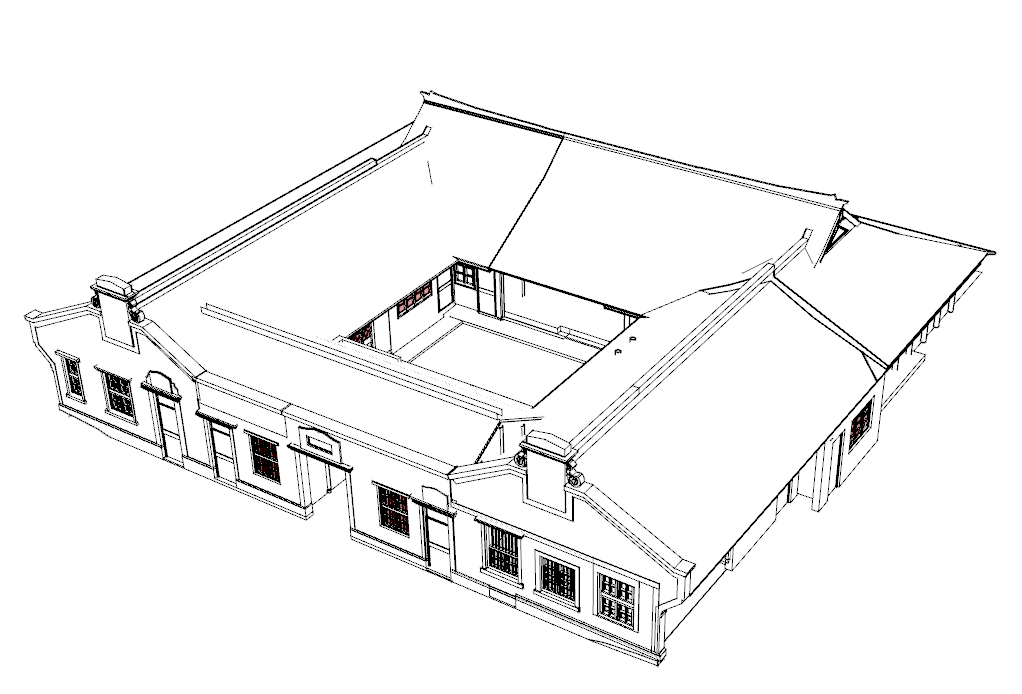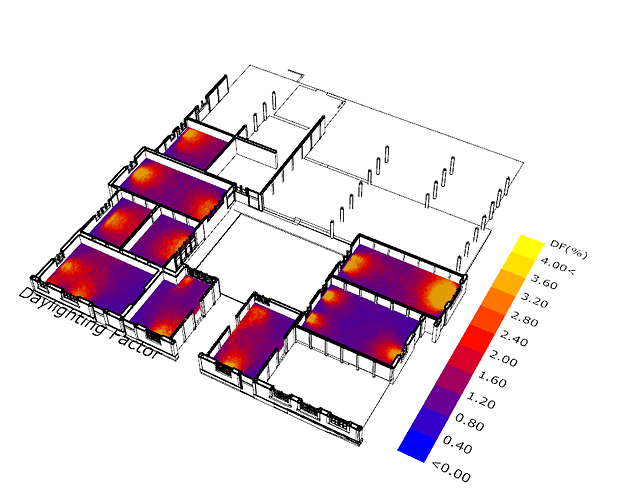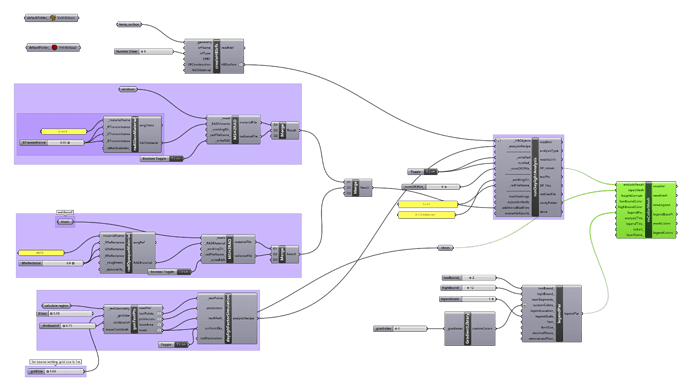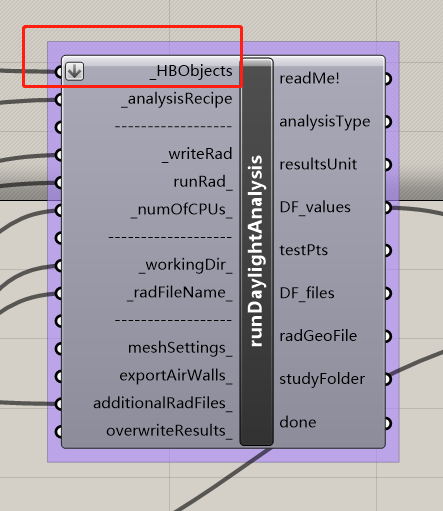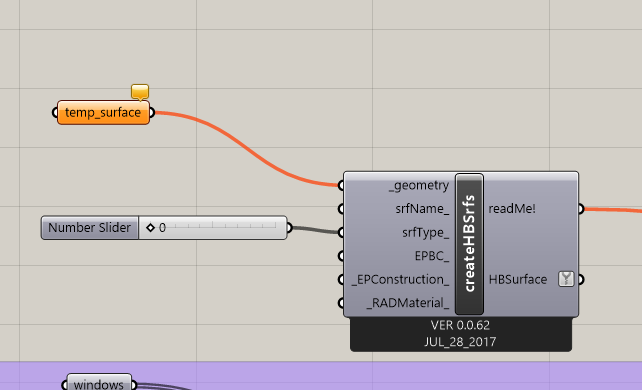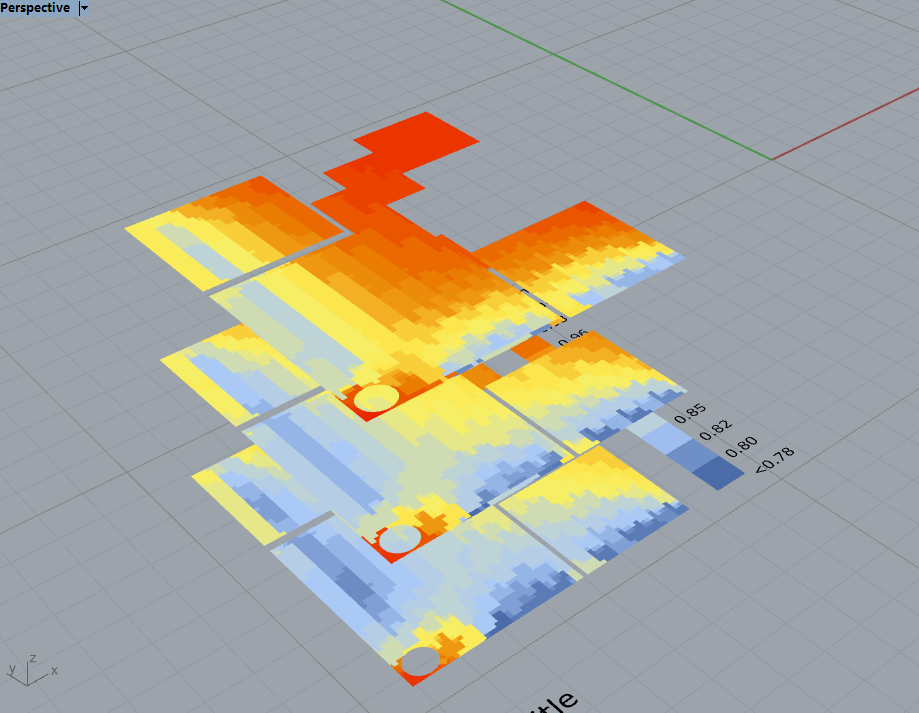I am analyzing some skylights cut into a helical roof. (Like a circular ramp.)
I have around 750 test points on the floor, and about 350 double curved panels that make up the roof. My analysis times are around 20 minutes. Does anyone have an idea for how to help honeybee handle the complex geometry and produce simulations faster? Would triangulation help it out?
Thanks.
JM
Honeybee uses Rhino’s built-in meshing to turn curved surfaces into the triangles and quads that Radiance needs. So any way that you can planarize the curved geometry that results in fewer polygons than Rhino’s built-in meshing will reduce the calculation time.
Here is the roof in question. Some of the panels will be glass and the rest are opaque.
Helix Roof.3dm (5.3 MB)
@ Hi,JimMarsh. I don’t know which analysis are you intending to do. But from the messages above, I guess you are doing daylighting analysis. For daylighting analysis,in my experience you can use Mesh instead of Brep. There is one compotent called MSH2RAD, you can pay more attention on it. This compotent is very suitable for some complex model. Below is daylighting analysis for a demo project.
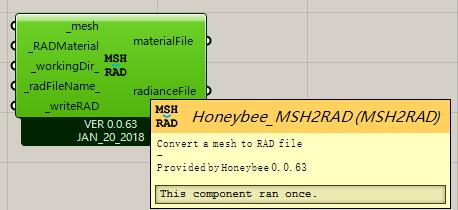
Thanks @minggangyin. That model is decently complex and the analysis resolution seems pretty high. How long did it take to analyze?
Hi @minggangyin I am having the same problem, can you post the script you used to generate the simulation you posted? would be helpful to me
Hi,@Ataur. I am happy to receive your reply. The core step of modeling the complex gemetry is to convert brep to mesh and using Honeybee’s MSH2RAD compotent for daylight modeling.
Here is the screenshot of the whole workflow.
daylight modeling for complex geometry V1.gh (584.6 KB)
@minggangyin btw I know that the (calculation region) is the testing surface. But what is the (temp_surface) which is connected to (_HBObjects)?
@Ataur Due to the origin geometry is so big, I can not upload it .The temp surface is a mini surface about 1m*1m in your model, you should model it in rhino or using grasshooper to generate .
Single Unit Simulation.gh (1.0 MB)
@minggangyin I uploaded my test GH file that i’m working on it, can you take a look at it. It seems like there is something i’m doing is wrong there.
@Ataur
Bug 1:the temp_surface and calculate region is used same geometry.
Bug 2 :the directionof your calculate region is not all to +Z direction.I have debuged your model. You can check it.
Here is debuged gh file.
Single Unit Simulation-debug.gh (1.0 MB)
@minggangyin Thank you for taking the time to look into the model.
For the temp surface (Bug 2) which is drawn outside the model. Is the component (runDaylightAnalysis) calculates the DF Daylight factor? that why it needs to compare the unobstructed daylight availability outside on that surface to interior daylight?
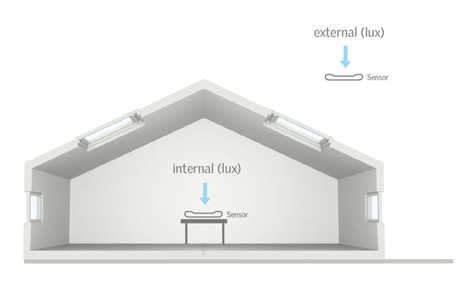
@minggangyin after a long search i spotted this forum and as I am quite new to using this software I am in desperate need of someone to help me spot where am i going wrong in running the day light analysis using honeybee. I hope you will see this message and reply to me. I shall attach the link to the file i am working on. The bubble on the right indicates that the material is not detected. I really dont know what does that even mean.
Will be really grateful if some1 could help me figure this out. https://storage.ning.com/topology/rest/1.0/file/get/9610346480?profile=original
Thank you for sharing this file. I have started looking into it. But I am wondering why exactly is the calculate region and temp surface required in the script for this analysis. Sorry to be bothering you with all this doubt. I have no other option but to jump into these questions because of the classwork i am having to deal with.I am a student in a studio with deadlines every other day.
